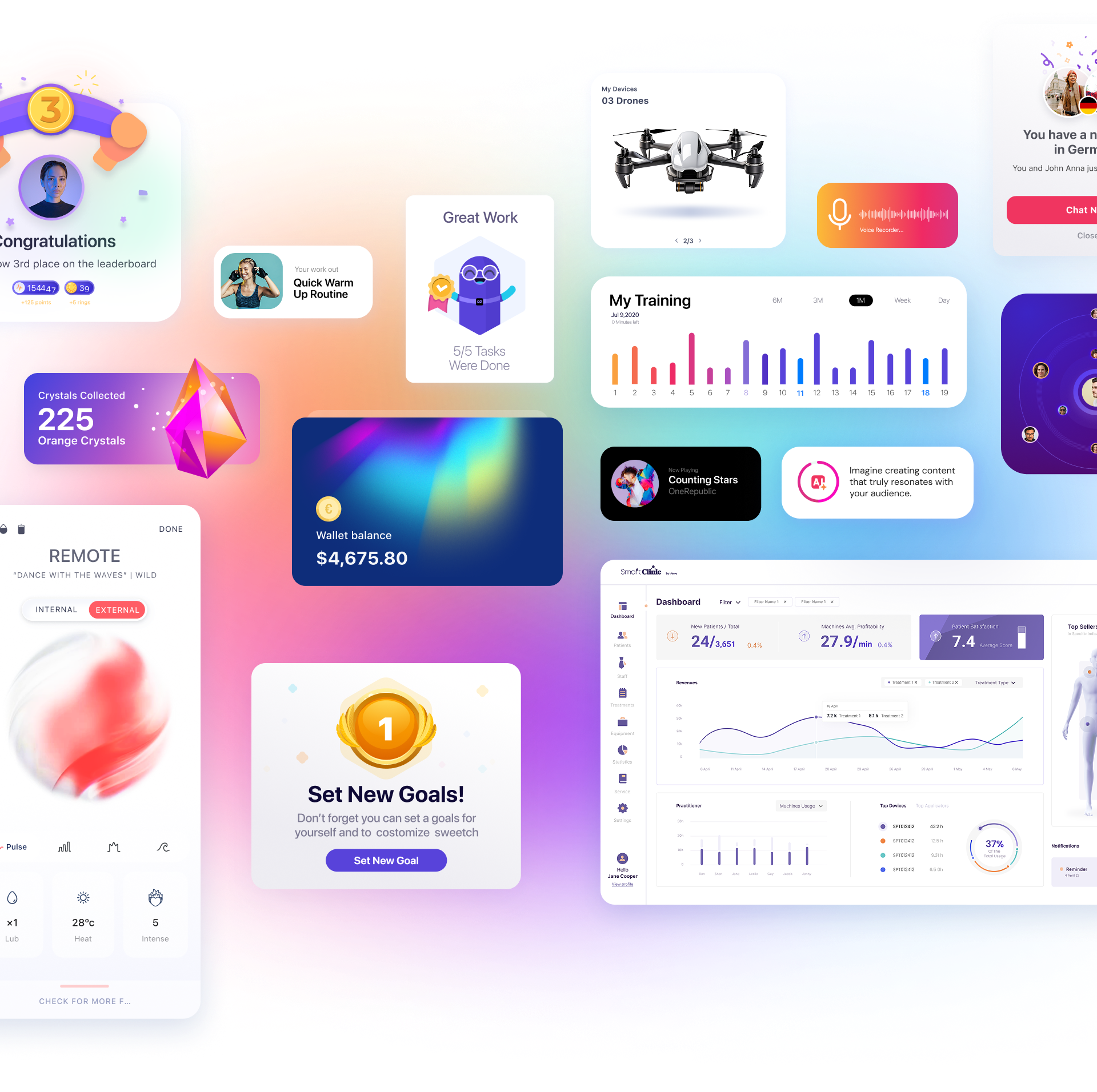In this article, we share our product design methodology, a simple yet highly effective approach that allows us at Triolla to consistently deliver outstanding products and exceptional results for our clients.

Assigning the Right People – Onboarding
Our process begins with onboarding, where we work closely with the client to define their needs and the goals of the project. What type of products are we designing, and what are the timelines? This alignment of expectations helps us assemble a dedicated project team with expertise tailored to the client’s specific industry. At this stage, the client understands that the professionals working with them are committed, experienced, and true experts in their field.
At Triolla, we believe in the power of accumulated knowledge and experience. That’s why we assign a full multidisciplinary team to manage each project, including developers, UX consultants, UI designers, and a senior UX designer to lead and oversee the process.
Discovery
A multi-hour workshop is held during the research phase to brainstorm all aspects of the project. After this session, every team member has a clear vision and understanding of the various facets of the future product. Here are some of the questions we ask during the kickoff meeting:
What is the goal of a specific product or feature?
What need or problem is it intended to address?
What is the expected demand, and who is the target audience?
Are we improving an existing product or creating something entirely new?
These are just a few of the questions that help us quickly and efficiently choose the best strategy for the specific project. Identifying the client’s pain points is another crucial aspect of this stage. These are the fundamental reasons for potential failure, whether due to lack of professional skills, budget constraints, or time limitations. Our job is to present a clear vision for the client and demonstrate the value we can deliver.
Market Research
We study and draw inspiration from both direct and indirect competitors. Often, our competitors face the same challenges as we do, and conducting a competitive analysis can provide valuable insights into design patterns, industry standards, and different approaches to similar problems. We aim to learn from industry benchmarks and leading products.
As a large-scale UX agency, one of our greatest advantages is our extensive and diverse portfolio, developed through years of delivering projects and services across various industries. When our experts analyze different sectors such as gaming, fintech, or healthcare, they can easily adapt solutions that worked in one field to address challenges in another. This breadth of experience, flexibility, and accumulated knowledge is one of Triolla’s core assets.
Another key component of market research is defining user personas. We seek the deepest possible understanding of the user and their unique journey. Before drawing any conclusions, our multidisciplinary team must identify the goals, motivations, and expectations of future users. This can be achieved through interviews, surveys, outreach, and more. Thoughtful use of these tools helps us create personas that accurately represent critical audiences and foster empathy with our users.
Additionally, tools like heatmap analysis provide essential data for evaluating different aspects of user behavior within our product. We later apply these insights during the ideation and implementation phases.
User Flows and Information Architecture
As part of building the product’s intelligence, we create a navigation system with a hierarchical structure and clear categorization. Using tools like a user experience canvas, we can map out where the user is within the platform, app, or product, and what information they need at each stage. Information architecture, for example, involves designing diagrams that help users better understand their location within a site. The user experience is also shaped by how we organize components, functions, and available data.
Visualizing the User Journey
We create a graphical representation of the user journey and the ideal interaction with the future product. The goal is to provide a holistic vision of the user experience, ensuring consistency and flow. The user journey also serves as a foundation for defining product specifications and requirements. While each product’s journey is unique, most user journeys include three stages: onboarding or registration, first-time experience, and daily use or retention.
Wireframing
We build the skeleton of the future product. Our team creates a visual guide that represents the structure, hierarchy, interactions, and critical components. This is also an excellent opportunity to address future challenges with team members and stakeholders, ensuring usability and reducing development time by establishing a solid information architecture.
At this stage, the product concept, strategy, and task prioritization are clear. The design team is ready to start building, knowing exactly what needs to be done. As a client, it is recommended to review and monitor project progress and wireframe updates.
Concept Meeting: Defining the Visual Baseline
We establish the visual foundation for the interface, including color palettes, fonts, images, input fields, and buttons. This step ensures visual consistency throughout the application by creating a baseline for all graphical interface elements.
User Interface Design
After selecting the visual concept, we apply the style to the wireframes and design the screens according to the final look and feel. GUI mockups provide a visual preview of the finished product for client approval before development begins.
Prototyping
The best way to experience the product before development is to create a prototype. Prototypes allow everyone involved in the product’s development to evaluate it from different perspectives. Often, a prototype starts with a few core components and evolves as needed. Creating a prototype enables us to gather feedback from product managers, potential users, and investors.
Product managers and entrepreneurs also use prototypes as tools for fundraising and engaging stakeholders, helping them connect with the product through tangible usability.
Usability Testing
This is a more advanced process we conduct with some clients. We select key screens from the product prototype and present them to potential users and internal stakeholders to identify usage patterns and pain points. This thorough research allows us to draw valuable conclusions about success metrics such as session duration, churn rate, and more.
Handoff to Research and Development
It is time to hand over the design to the R&D department for final iteration. Once again, product designers provide detailed specifications outlining exactly what needs to be implemented.
At this stage, we transfer the prototype to development. This step is critical for completing the process, and communication is essential. We involve the client to facilitate the final development phase. Sometimes, we add a final review stage to ensure that no elements were missed during development. This is our Design QA.
Delivering a prototype does not mean the work is finished or the product design process is over. On the contrary, testing and design are ongoing, iterative processes.
Why Choose Triolla?
We recommend Triolla as your first choice for any future business initiative. Our extensive experience across diverse industries, our seasoned team of professionals, and our uncompromising standards for product design and user experience optimization will help you achieve your goals.
The product design methodology we have shared is a proven approach for planning and designing complex platforms and applications. Following these steps leads to success. This is our product design methodology, a complete and effective way to deliver the best possible product to our clients. For more updates from Triolla San Francisco and UX California, subscribe to our bi-weekly newsletter.





 Book a Call
Book a Call





